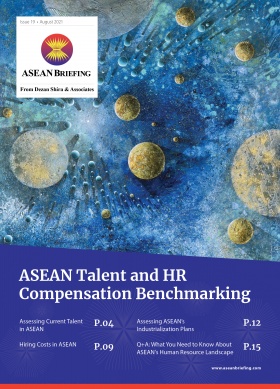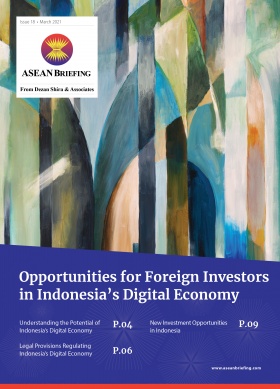An Overview of Indonesia’s Geothermal Energy Sector
Indonesia is home to some 40 percent of the world’s geothermal resources, and the sector will be key to the country’s energy sustainability goals.
Indonesia is one of the world’s leading geothermal energy powers and has ambitions to further grow the sector as the country embraces renewable energy sources.
Currently, Indonesia is the second largest producer of geothermal energy, trailing only the US, and has the world’s largest geothermal energy potential. Home to about 40 percent of potential global geothermal resources, the Indonesian government has identified the sector as key to the country’s energy sustainability goals.
Geothermal energy is created by harnessing the heat produced by the earth, namely by using steam from underground reservoirs of hot water to power turbines that generate electricity. In most cases, energy developers access these underground reservoirs by drilling wells into the ground.
Indonesia’s geothermal energy potential
Indonesia’s geography makes the island nation uniquely placed to tap into geothermal energy. Located by the Ring of Fire, the seismic activity surrounding Indonesia is extremely active, providing ample geothermal energy potential. Due to these features, Indonesia has an estimated 23.7 gigawatts in geothermal capacity across 300 sites.
However, the underground reservoirs of hot water that geothermal energy depends on cannot be accessed everywhere. Even when developers identify a potential energy source, it is not clear how much energy it will produce until after explorers complete the expensive drilling process.
Challenges associated with identifying geothermal energy sources are also present in Indonesia, despite the country’s high levels of seismic activity. These challenges are exacerbated by Indonesia’s infrastructure deficits, which are especially acute in the remote, difficult-to-reach areas where underground reservoirs are typically found. Accordingly, while Indonesia has ample geothermal reserves, the costs and uncertainties associated with exploration, land clearing, and drilling remain a key challenge.
Plans to develop geothermal energy
The Indonesian government is in the process of implementing ambitious plans to rapidly grow the geothermal energy sector. To date, progress towards reaching these goals has achieved mixed results.
According to the General Plan for National Energy (RUEN), Indonesia plans to reach 7.24 gigawatts of geothermal power by 2025 – which government officials said would necessitate US$15 billion in investment – and 9.3 gigawatts by 2035. However, in June 2020, Ida Nuryanti Finahari, the geothermal director of the Energy and Mineral Resources Ministry (ESDM), said that Indonesia would achieve its goal of having about seven gigawatts of geothermal power production by 2030, which would be five years behind schedule.
Although the development of geothermal energy in Indonesia has not progressed according to plan, it is still one of the largest producers of geothermal energy in the world. Currently, Indonesia has about 2.28 gigawatts of installed geothermal power capacity; the US has 2.6 gigawatts of installed geothermal power capacity, the most in the world.
More broadly, the Indonesian government seeks to have renewables constitute 23 percent of electricity generation by 2025, almost double from 12 percent currently. Indonesia has pledged to become carbon neutral by 2060.
At its current pace, Indonesia will likely fail to reach its renewable energy goal by 2023. For Indonesia to make up ground and achieve its longer them renewable energy goals, further expansion of geothermal energy is essential.
Market and regulatory barriers
Developing geothermal energy in Indonesia presents a number of challenges, including the energy source’s positioning in the regulatory and market landscape. Geothermal energy in Indonesia continues to be significantly more expensive than coal, which is also abundant in the country. Coal makes up about 60 percent of Indonesia’s electricity production, and the government continues to subsidize its use for energy production.
With new coal plants in development, it is far from being phased out as a key energy source, even if its share gradually declines. In the absence of regulations that require the use of renewable energy, it is extremely challenging for geothermal energy producers to compete with the price of coal energy.
Webinar – Navigating Global Minimum Tax in Asia: Insights for Businesses
Thursday, November 16, 2023 | 9:00 AM San Francisco / 12:00 PM New York / 6:00 PM Brussels / 1:00 AM (Nov. 17th) Beijing
Partner Kyle Freeman will introduce how key Asian economies are implementing the new changes, how companies are going to be impacted, and what businesses should be doing now.
Coal is not the only competitor to geothermal energy. Due to technological advancements, wind and solar power are increasingly cost-effective and competitive energy sources. In contrast, cost efficiencies in geothermal energy production – especially in Indonesia – have not kept pace.
Three state-owned enterprises dominate geothermal energy production in Indonesia: PT Pertamina Geothermal Energy (PGE), PT PLN Gas and Geothermal, and PT Geo Dipa Energi. PGE is especially dominant, as it is responsible for about 82 percent of the country’s entire geothermal energy production. This lack of competition in the sector risks hampering innovation.
The government is trying to address these various challenges by making the sector more attractive to foreign investors, via reforms through the Omnibus Law. Business lines involving exploration and drilling in the geothermal sector will be considered a priority business sector and companies can receive a tax allowance for such activities. Further, foreign capital ownership for projects in this sector has increased to 70 percent for ASEAN-based companies, and 67 percent for non-ASEAN-based companies.
About Us
ASEAN Briefing is produced by Dezan Shira & Associates. The firm assists foreign investors throughout Asia and maintains offices throughout ASEAN, including in Singapore, Hanoi, Ho Chi Minh City, and Da Nang in Vietnam, Munich, and Esen in Germany, Boston, and Salt Lake City in the United States, Milan, Conegliano, and Udine in Italy, in addition to Jakarta, and Batam in Indonesia. We also have partner firms in Malaysia, Bangladesh, the Philippines, and Thailand as well as our practices in China and India. Please contact us at asia@dezshira.com or visit our website at www.dezshira.com.
- Previous Article 2023 Foreign Investment Opportunities in Laos
- Next Article Indonesia Considers an SEZ on Natuna: Investment Prospects, Challenges







